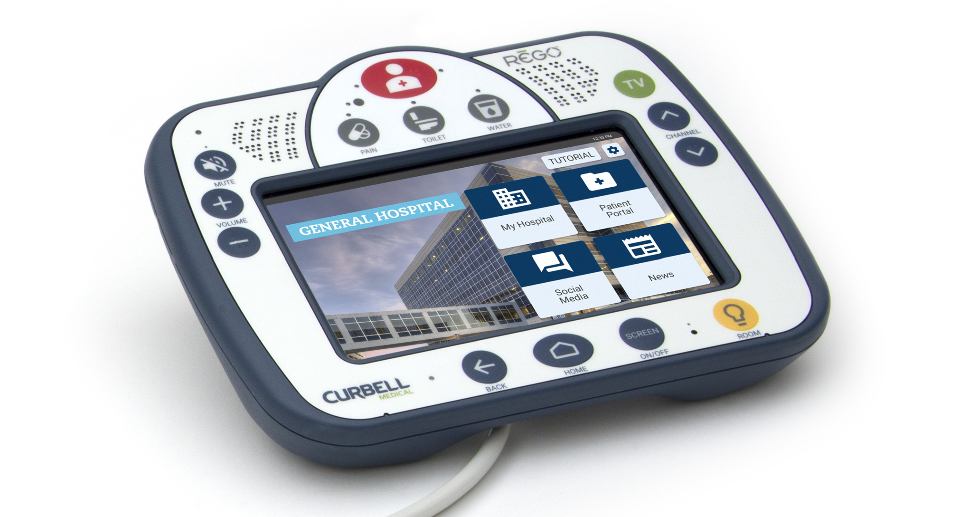
If you or a loved one has ever spent time recovering in the hospital, you are likely familiar with Nurse Call devices that sit at all patients’ bedsides. At a minimum, they allow you to send a signal to the nurse’s station, and for the past few decades, they have served as a remote speaker and controller for the room’s television.
Curbell Medical wanted to revolutionize the patient’s in-bed experience and bring more control and comfort to patients at a time when everything may seem out of their control. They envisioned a “Patient Interaction System” — a multi-faceted touch screen bedside device that would integrate with room controls, the patient’s medical records, and the hospital’s network to allow the patient or their visitors to perform a wide range of useful tasks. This level of connectivity would empower the patient or their family to ensure the comfort of the room, via lighting and temperature controls. It would enable patients to better understand their condition and care plan via access to their own medical records, scheduled tests and exams, and follow-up and discharge information, while also providing access to a library of videos, articles, and other information that the patient’s care team could load to the device. It would offer entertainment options including games, news, movies, and access to the internet, in addition to controlling the room’s TV. And of course, it would allow the patient to call the nurse when needed. To support our design and engineering efforts, we first reviewed previous marketing research conducted by Curbell, which we supplemented with our own needs-finding observational research visits to local hospitals. We drafted human factors criteria and use cases to ensure that the design carefully considered the environmental conditions in the hospitals, as well as recognizing a unique challenge for this device: that many hospital patients may be experiencing reduced cognitive and sensory abilities brought on by illness, injury, fatigue, or even the medications they may have been prescribed. The end product is the Curbell Rego, which we designed as an attractive and easy-to-use device that first and foremost ensures the prominence of the critical nurse call function, in both the design and placement of the button. Other frequently used functions (e.g., basic TV controls) are also readily available on the physical device, and all of the buttons are backlit to make finding them in the dark as easy as possible. The Rego consists of highly contrasting colors to ensure it stands out from typical hospital linens, making finding it as easy as possible, especially for patients with poor visual acuity. We provided clear graphic and text labels to maximize comprehension for all ages and mental capabilities, and added LED feedback to the critical nurse call functions for patient reassurance that the call had been sent. The Rego has soft edges for maximum comfort and safety and to avoid any entanglement with IV lines or other tubing, and its thicker form factor better distributes the weight of the device for patients who choose to place it in their lap. For the touch screen that accesses other entertainment and education options, such as the Patient Portal, we designed a framework that Curbell could build from. We used high-contrast graphics and text to account for potentially reduced patient visual capabilities, with a font size that is easy to adjust. We carefully screened and limited the options on screen at any one time to ensure a clear and simple interface that wouldn’t overwhelm patients who may be suffering from reduced cognitive capabilities.